Your kitchen’s energy consumption is likely draining your wallet more than you realize. Modern smart technology offers powerful solutions that’ll slash your utility bills while making your cooking space more efficient than ever. From intelligent appliance scheduling to real-time monitoring dashboards, these seven integration strategies can transform your kitchen into an energy-saving powerhouse. The question isn’t whether you can afford to upgrade—it’s whether you can afford not to.
Smart Appliance Scheduling and Automation Systems
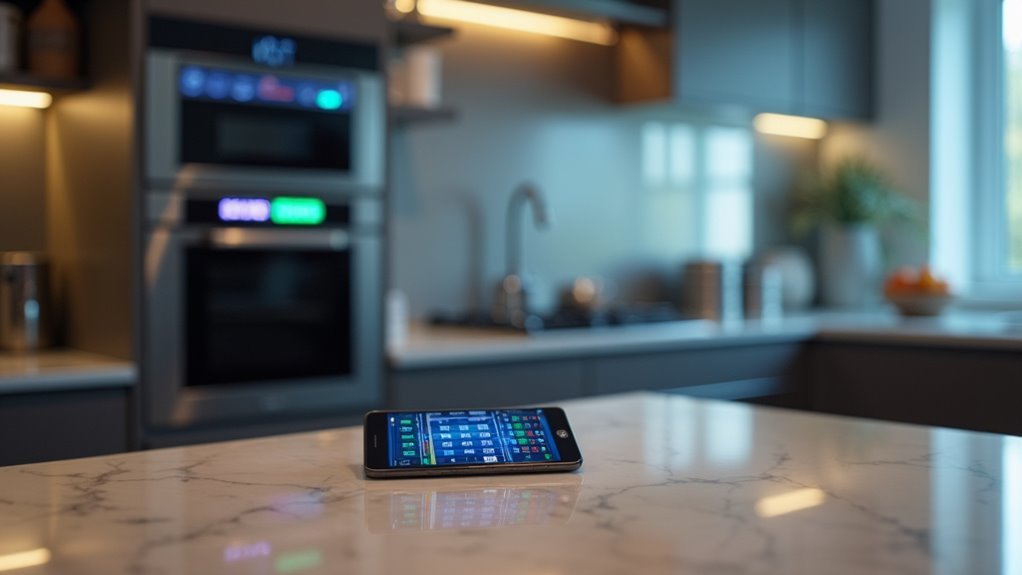
While you’re probably familiar with programming your coffee maker to brew at dawn, today’s smart appliance scheduling takes energy efficiency to an entirely new level.
You can program dishwashers, ovens, and refrigerators to operate during off-peak hours when electricity rates drop considerably. Automation systems integrate seamlessly with smart home hubs, giving you voice control and remote management capabilities from anywhere.
Smart appliance scheduling during off-peak hours can slash electricity bills while providing convenient voice control and remote management from anywhere.
Energy monitoring features provide real-time data on energy consumption, helping you identify wasteful patterns and optimize usage accordingly.
You’ll discover customizable settings that automatically adjust based on your daily routines. Schedule appliances during daylight hours to maximize natural light benefits, reducing artificial lighting needs.
These integrated systems transform your kitchen into an energy-efficient powerhouse that saves money while maintaining convenience.
Energy-Efficient LED Lighting With Motion Sensors
When you upgrade to energy-efficient LED lighting with motion sensors, you’ll slash your kitchen’s lighting costs by up to 75% compared to traditional incandescent bulbs.
This automated lighting system guarantees lights activate only when you’re present, maximizing energy savings throughout your daily routine.
Smart LED bulbs enhance energy use by automatically adjusting brightness based on time of day and natural light availability.
You’ll enjoy customizable lighting levels with dimmable fixtures that improve task lighting for cooking while helping reduce energy consumption.
With LED bulbs lasting approximately 25,000 hours, you’ll replace them less frequently, minimizing environmental impact from discarded bulbs.
Motion sensors paired with programmable LEDs create an intelligent lighting system that adapts to your kitchen activities, delivering ideal illumination exactly when needed.
Smart Refrigerator Optimization and Temperature Control
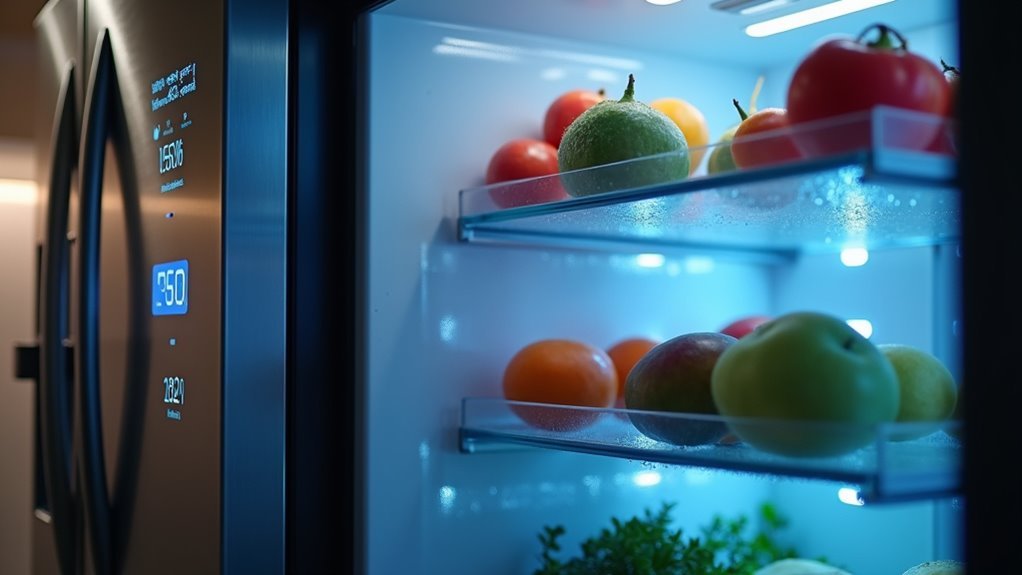
Smart refrigerator enhancement centers on precise temperature control that can reduce your energy consumption by up to 15% while extending food freshness.
Set ideal temperature settings between 35°F-38°F for your refrigerator and 0°F for the freezer to guarantee food safety while you minimize energy use.
These energy-efficient appliances feature internal cameras that let you monitor food inventory remotely, reducing food waste by preventing overstocking.
Activate energy-saving modes that automatically adjust cooling based on usage patterns during low-activity periods.
Enable door alarms to remind yourself to close doors promptly, preventing unnecessary energy loss.
Regular condenser coil cleaning prevents overheating and compressor strain.
Smart refrigerators transform your kitchen into an energy-conscious space through intelligent temperature management.
Induction Cooking Technology and Smart Power Management
Beyond optimizing your refrigerator’s efficiency, induction cooking technology offers the most significant energy upgrade you can make to your kitchen’s cooking capabilities.
You’ll achieve up to 90% energy-efficient performance compared to conventional gas or electric ranges that operate at only 70% efficiency. This technology reduces cooking times while lowering energy consumption through direct electromagnetic heating.
Smart power management systems help you optimize use by scheduling cooking during off-peak hours, reducing electricity costs.
Your induction cooktop’s precise temperature controls automatically adjust power levels based on cookware size, helping minimize energy waste.
When paired with smart power strips, these cooktops eliminate standby power loss by automatically shutting off when not in use, maximizing your kitchen’s overall efficiency.
Intelligent Ventilation and Air Quality Monitoring
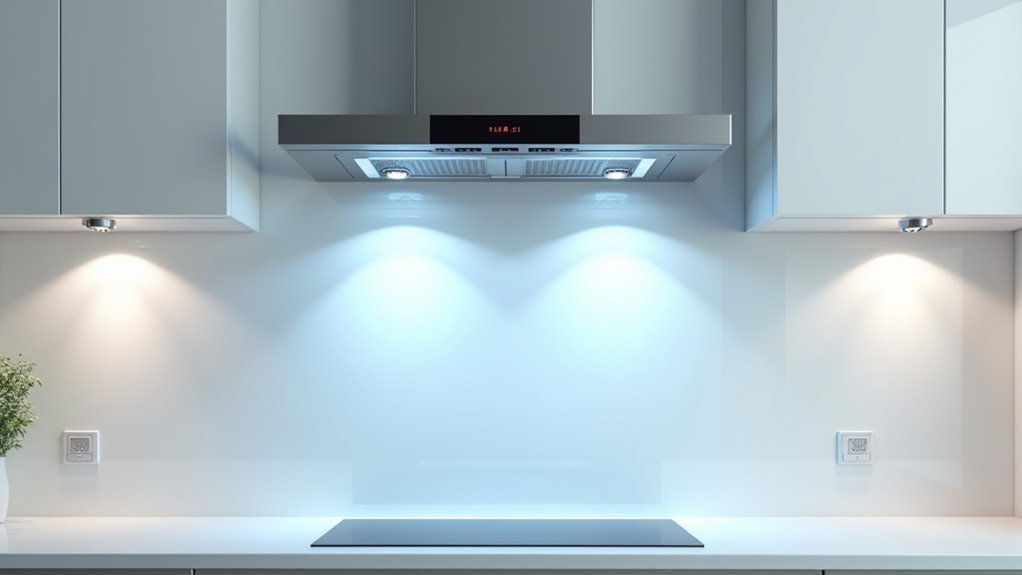
As cooking activities generate heat, moisture, and airborne particles, intelligent ventilation systems automatically adjust airflow based on real-time air quality data to maintain ideal indoor conditions while minimizing energy waste.
These systems use advanced sensors for humidity detection and temperature monitoring, activating only when necessary to enhance energy consumption.
Smart air quality monitoring provides real-time insights into pollutant levels, enabling precise ventilation adjustments for healthier indoor air quality.
You’ll benefit from systems that communicate with other smart appliances, like range hoods that automatically activate when cooking emissions are detected.
Energy recovery ventilators greatly boost energy efficiency by transferring heat between incoming and outgoing air, reducing additional heating or cooling needs while maintaining optimal kitchen air quality.
Water-Saving Smart Faucets and Dishwasher Integration
How can your kitchen’s water consumption drop by nearly half while maintaining full functionality?
Water-saving smart faucets deliver 30-50% reductions compared to standard models, cutting both water and energy costs for heating. You’ll benefit from touchless activation and precise flow control that minimizes waste during food prep and cleaning.
Pairing these smart faucets with energy-efficient dishwashers creates powerful technology integration.
Modern dishwashers average just 3 gallons per load while smart sensors automatically adjust water usage based on load size and soil levels. This optimization reduces both water usage and energy consumption considerably.
When you combine these technologies, you’re creating a sustainable kitchen that dramatically lowers your household’s environmental impact while maintaining peak performance and convenience.
Real-Time Energy Monitoring and Analytics Dashboard
When you integrate smart meters with your kitchen appliances, you’ll gain unprecedented visibility into exactly how much energy each device consumes throughout the day.
These real-time monitoring systems transform raw energy data into actionable insights through intuitive analytics dashboards that clearly show which appliances are driving up your electricity bills.
You can then use this data-driven intelligence to make informed decisions about when to run energy-intensive appliances and identify opportunities to reduce your overall consumption by 10-15%.
Smart Meter Integration
Smart meters transform how you understand your kitchen’s energy consumption by delivering real-time data directly to your fingertips. These devices integrate seamlessly with energy management systems to send alerts when you’re exceeding normal usage thresholds. You’ll receive actionable insights about energy usage patterns through analytics dashboards that identify high-consumption appliances affecting your energy bills.
| Smart Meter Benefits | Impact |
|---|---|
| Real-time monitoring | Immediate consumption awareness |
| Usage pattern analysis | Identifies wasteful habits |
| High-consumption alerts | Prevents energy spikes |
| Smart appliance integration | Automated scheduling capabilities |
| Cost optimization | Up to 15% bill reduction |
Integration with smart appliances enables automated scheduling based on real-time energy costs. This energy optimization approach transforms appliance use from reactive to proactive, maximizing efficiency while minimizing expenses.
Data-Driven Energy Insights
While smart meters provide the foundation for energy awareness, analytics dashboards reveal the true power of your consumption data by transforming raw numbers into actionable intelligence.
Real-time energy monitoring lets you instantly spot energy-hogging appliances and adjust usage patterns for maximum energy conservation. You’ll track energy usage trends over time, optimizing appliance schedules to create a truly energy-efficient kitchen.
Advanced systems integrate with smart appliances, automatically reducing waste during peak hours. Set energy consumption goals and receive alerts when you exceed thresholds, fostering mindful habits.
Data-driven insights suggest specific actions like running dishwashers during off-peak hours, capitalizing on lower rates to slash utility bills while maintaining convenience.
Frequently Asked Questions
How to Reduce Energy Consumption in a Kitchen?
You’ll reduce kitchen energy consumption by using ENERGY STAR appliances, switching to LED lighting, cooking with smaller appliances like microwaves, maintaining equipment regularly, and installing low-flow faucets.
How to Make Your Kitchen Energy Efficient?
You’ll maximize kitchen efficiency by upgrading to ENERGY STAR appliances, installing LED lighting, using smart plugs for standby devices, cooking with pot lids, and installing low-flow faucets.
What Are the New Technology Used in Kitchen Operations?
You’ll find smart ovens with sensors, refrigerators with internal cameras, AI-powered devices learning your habits, energy-efficient dishwashers adjusting cycles automatically, and smart lighting systems responding to occupancy and natural light levels.
What Is the Cheapest Way to Cook With Electricity?
You’ll save most money using electric kettles for boiling water, microwaves for reheating, and pressure cookers for meals. Keep pot lids on, batch cook in ovens, and choose efficient appliances over stovetops.

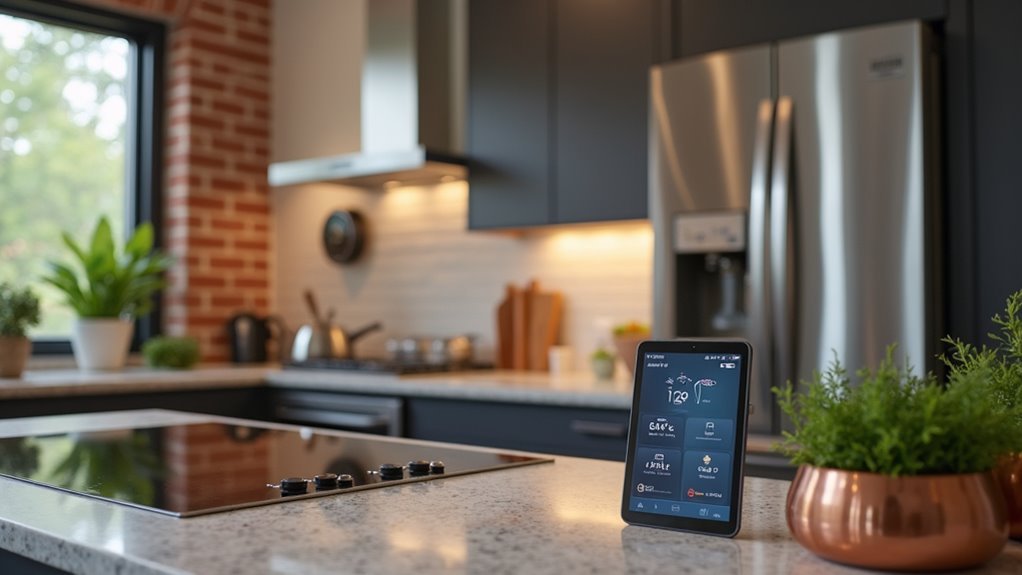
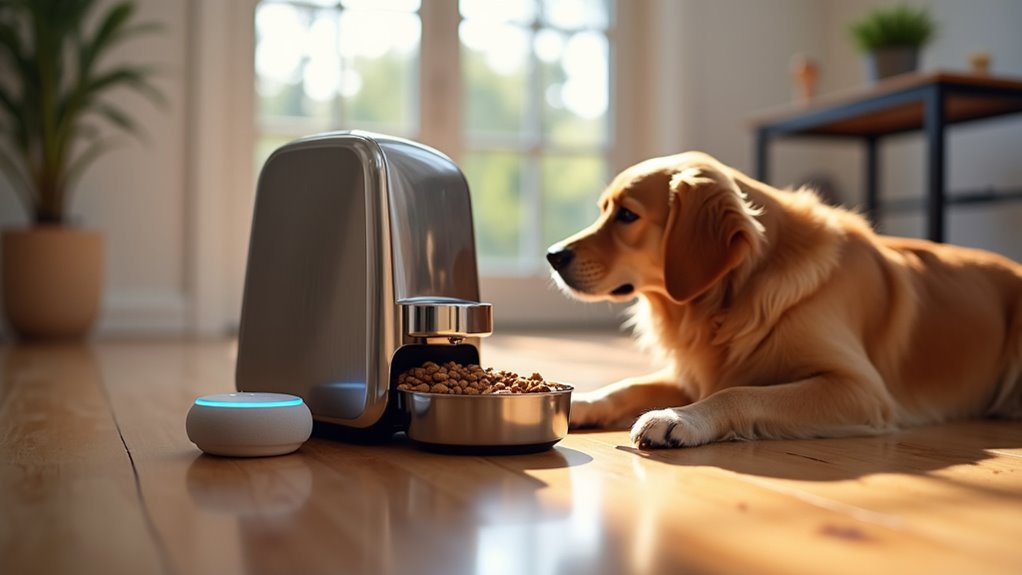
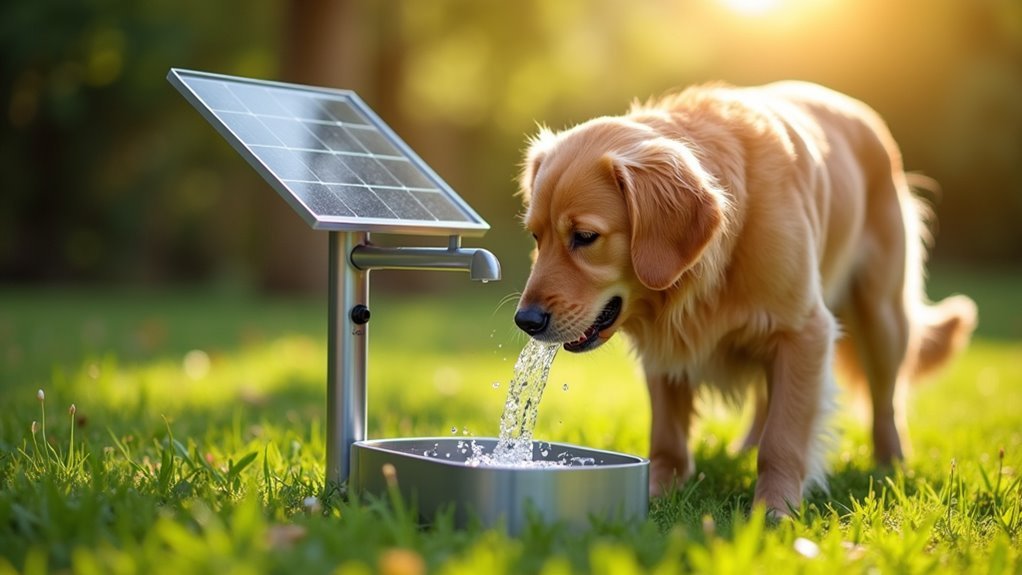
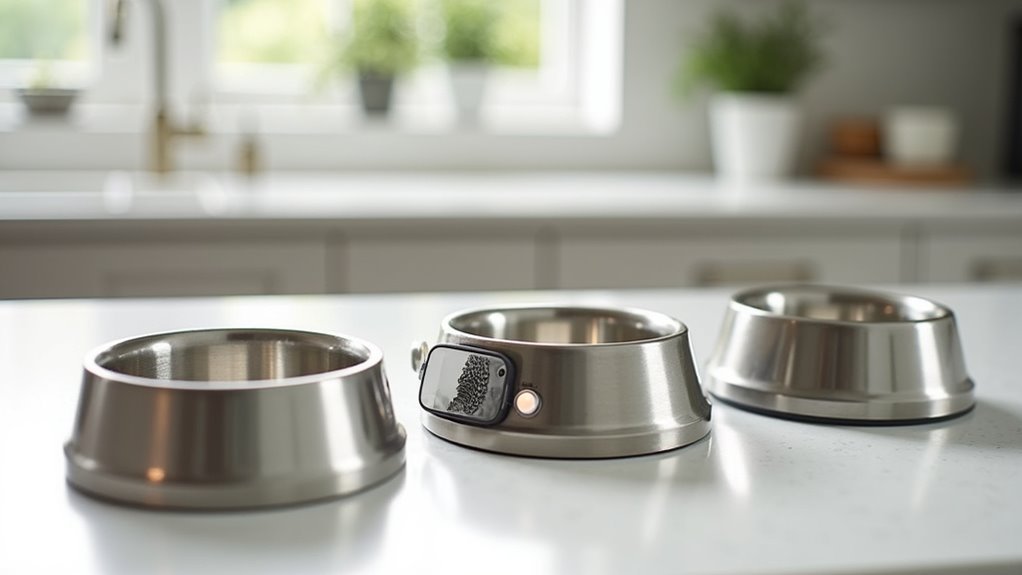
Leave a Reply